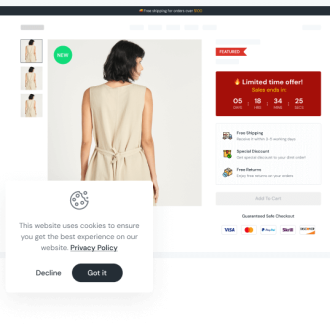A fast-loading online website is an important factor affecting the purchasing decisions of customers when they visit your store. Besides great product images to attract customers, you need to optimize them more to increase the conversion rate through shopping experiences. Here are 10 suggestions for optimizing the images of your products to make your website load more quickly.
What Is Product Image Optimization?
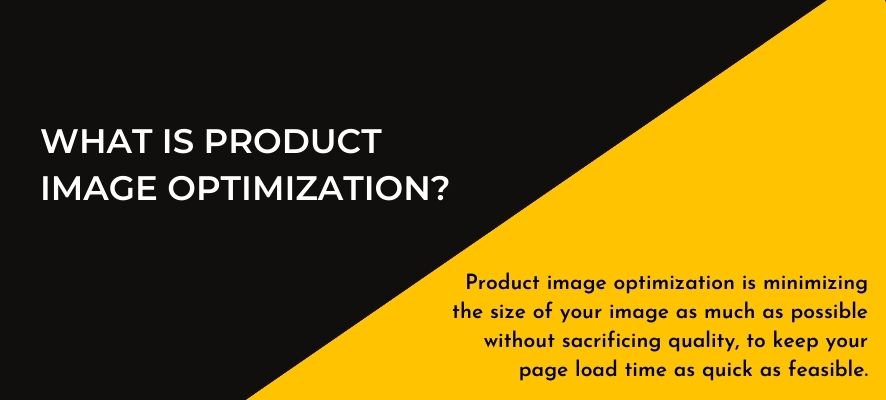
Product image optimization means minimising the size of your image as much as possible without sacrificing quality to keep your page load time as quick as feasible. That means your product images will look flawless on desktop and mobile and not hinder website performance.
This also helps product images rank highly on Google and other image search engines, which is another aspect of image SEO. Three main elements are needed to create high-quality product images with the lowest file size.
- Image file size (JPEG vs. PNG vs. WEBP images)
- Image compression level
- Image height and width
You can decrease the size of the image and enhance website performance by finding a balance between each of them
Why is Optimize Product Images Better?
According to data from the HTTP Archive, unoptimized images often make up 75% of the weight of a webpage. The performance of your website might decrease as a result. The key element of effective e-commerce website design is image optimization, which results in the following advantages:
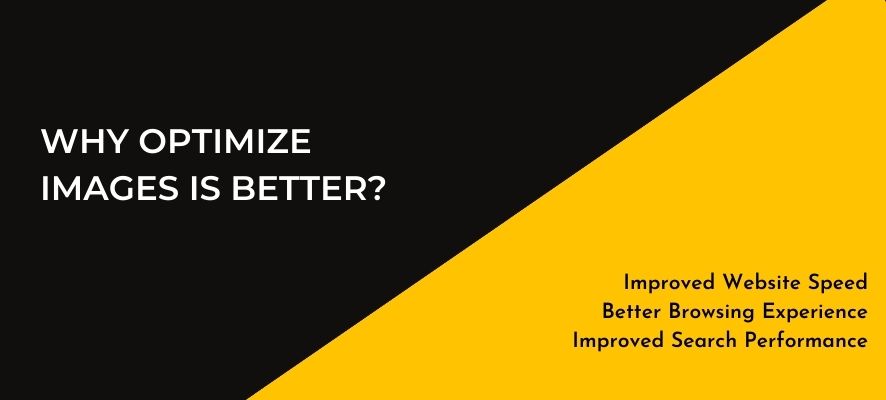
Improved Website Speed
To make web pages load more quickly, there is image optimization for both desktop and mobile. For shoppers, they improve the shopping experience. The rate at which visitors leave can rise by 103% if your website loads slowly for even two seconds.
Google announced that one of the factors relied on by its algorithm to rank pages is site speed. The speed at which your page loads depends on its content. It’s frequently explained as:
- Page load time is the time it takes to display the content on your page.
- The time to first byte is the number of milliseconds it takes for your browser to receive the first byte of information from your web server.
Better Browsing Experience
No one wants to wait, and neither do your customers. Page speed is important to a customer’s experience while they visit and shop in your online store. Just one second of delay can impact a person’s decision to purchase.
Pages with a longer load time have been linked with higher bounce rates and a shorter average time on pages. The user experience would be better if page load times were lowered even by just one second. Search engine rankings benefit from improved user engagement and interactions with your site, which can increase engagement, conversions, and satisfaction.
Improved Search Performance
Images that have been optimized make it easier for users and search engines to understand your website and find your content online. Some benefits of optimizing product images are:
- High-ranking your images in Google’s Image Search can bring more traffic to your website and build your brand.
- Better for visual search. Some 62% of Gen Z and millennial consumers want visual search more than any other new technology.
10 Tips To Optimize Product Images
Tip 1 - Keep the image name simple and short
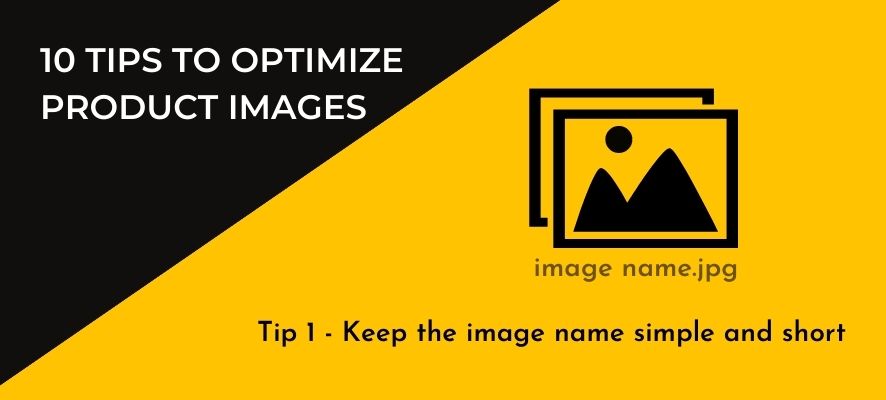
Keeping the default file names that your camera provides when you post photographs to your website is quite simple. However, including pertinent keywords will help your website rank on search engines when it comes to image SEO.
For images to be optimized, descriptive, keyword-rich file names must be created. Search engines read both the content and the file names of the images on your website.
Remember to put yourself in your customer’s shoes and think about how they search for products on your website. You can also look at website analytics to see which keywords your customers have used, then apply that formula to your image name. If you do not have any keyword data, you can use relevant and helpful keywords.
Tip 2 - Optimize your alt attributes carefully
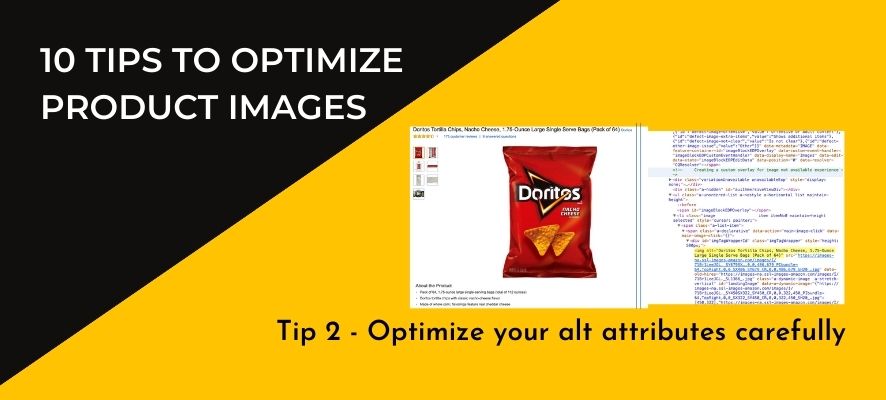
Alt attributes are the text alternative to images when a browser can’t properly render them. They’re also used for web accessibility. The alt attribute also adds SEO value to your website.
Adding appropriate alt attributes that include relevant keywords to the images on your website can help you rank better in the search engines. Using alt attributes is likely the best way to ensure that your e-commerce products appear in Google images and web search results.
Here are some simple rules for alt attributes:
- Describe your images in plain language, just like you did for your image file names.
- If you sell products that have model numbers or serial numbers, use them in your alt attributes.
- Don’t stuff your alt attributes full of keywords (e.g., alt=”ford mustang muscle car buy now cheap at the best price on sale”).
- Don’t use alt attributes for decorative images. Search engines may penalize you for over-optimization.
Finally, regularly evaluate your level of sanity. Verify that your alt attributes are correctly filled out by looking at the source code of your web pages.
Tip 3 - Choose your product images dimensions and product angles wisely
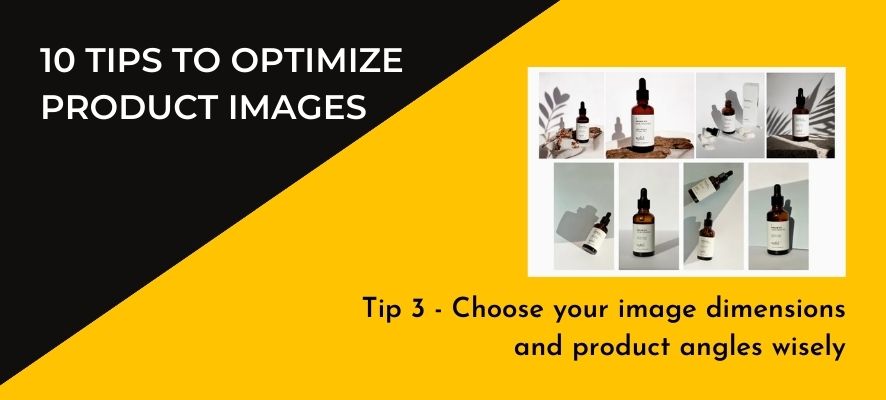
It’s good to show multiple angles of your product to your customers. The best compositional approach to displaying your products is from a top-down or flat-lay viewpoint. A unique view of a product is provided by the top-down viewpoint. Some angles you need to have are:
- The front angle
- The Profile angle
- The 45-degree angle
- The back angle
- The top shot
- The macro shot
Filling out your alt attributes is the best way to make the most of these extra photos. And you could do that by creating unique alt attributes for each product shot. To attract potential searchers to your website, it’s important to provide descriptions of your base alt attribute. Google will reward you with more searches if you put in the extra work.
Remember, whatever you do, don’t place the largest image on your webpage and simply shrink the dimensions via the source code. Due to the increased file size of the related image, this will extend the time it takes for your website to load. Instead, display a smaller version of the image on the page and give users the choice to view a larger version in a pop-up or on another page.
Tip 4 - Resize your images
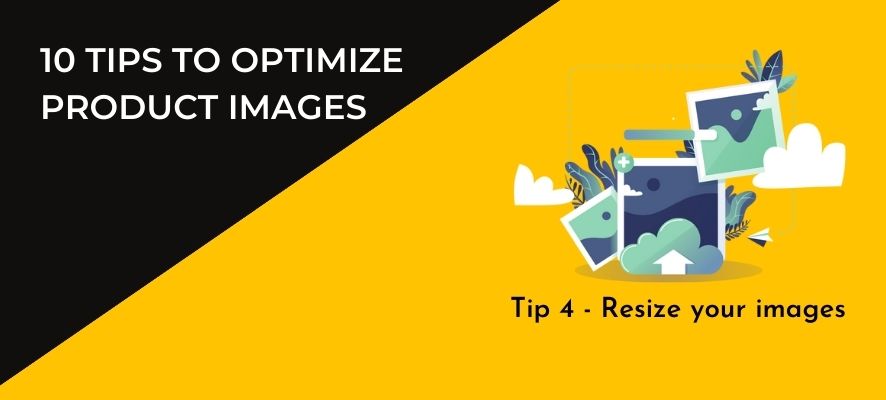
Depending on the size of your files, it can take a while for everything to load when a customer visits your site. A web page takes longer to load when the file sizes are larger. (Note: You will not have a problem with this if you’re a Shopify merchant because your Shopify theme automatically compresses images.)
If you can decrease the size of the image files on your webpage and increase page load speed, fewer people who visit your site will click away. There are numerous online tools you can use for resizing your product images; however, you can also decrease the image size by using image editing apps.
For e-commerce images, a good rule of thumb is to try to keep your image file size below 70 kilobytes. That can be difficult at times, especially for larger images.
Tip 5 - Choose the right image format
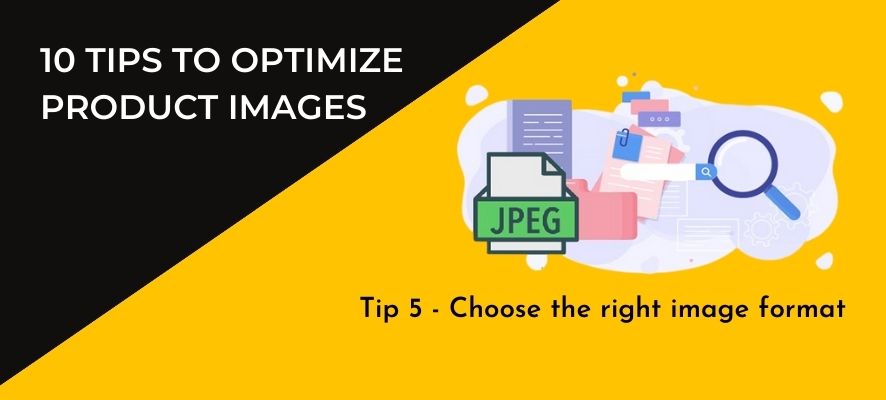
Three common file types are used to post images to the web: JPEG, PNG, and GIF. However, JPEG works best.
JPEG (or .jpg) is the de facto standard image file type for the web. JPEG images can be compressed considerably, which results in quality images with small file sizes. In most cases, JPEGs will be the best image format for e-commerce. They provide the best image quality for the smallest file size.
Tip 6 - Optimize your thumbnails
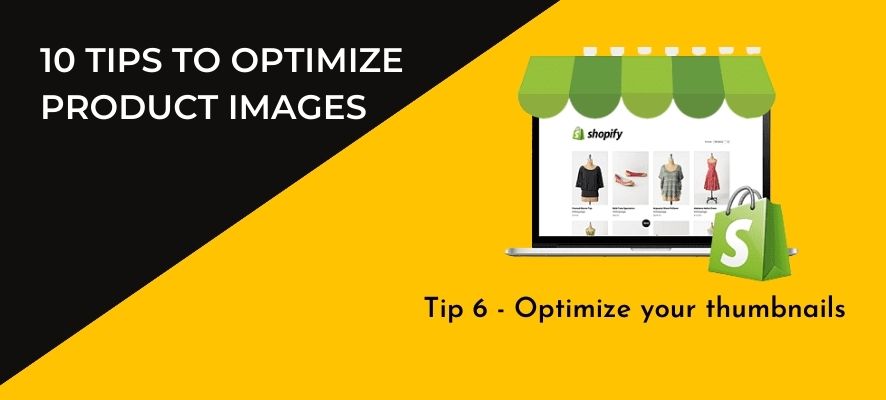
Usually, thumbnails show up at key points during the shopping experience. You can lose a potential consumer if they are experiencing delays in the loading of your category pages. However, if you are a Shopify merchant, Shopify will optimize for you.
What you need to do is make your thumbnail file sizes as small as possible, and vary your alt attribute text so as not to duplicate the text that you would use for the bigger versions of the same image.
Tip 7 - Use image sitemaps
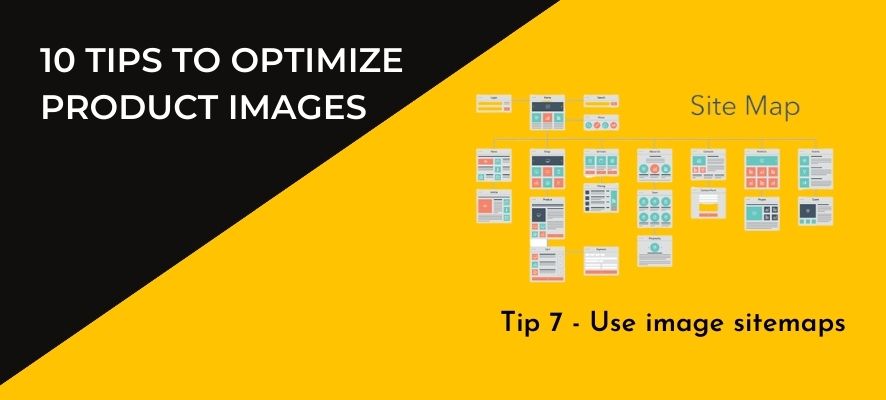
Image sitemaps are a good way of telling Google about other images on your site, especially those that we might not otherwise find. Google has a list of guidelines for publishing images that could raise the SERP ranking of your website.
Additionally, by providing Google with more details about the images on your website through Google sitemaps, you can make it easier for Google to find more of your images than it otherwise would.
Using sitemaps doesn’t guarantee that your images will get indexed by Google, but it’s certainly a positive step toward image SEO. Google Webmaster Tools has many suggestions for correctly formatting your sitemap.
You must provide exact tags for each of your images. In addition, a different sitemap can be made just to list images. In any sitemaps you have or will build, it’s important to include all the relevant information while using specific tags. Check out these guidelines from Google when you create a sitemap with image information.
Tip 8 - Beware of decorative images
Websites often have a variety of decorative images, including backgrounds, buttons, and borders. Any graphic that isn’t connected directly to a product is probably considered a decorative image.
Even though having decorative images may greatly improve a web page’s aesthetic appeal, they might cause a large total file size and slow load times. You want to check the file sizes of all the decorative images on your site and use a template that minimizes file sizes.
Here are some tips for reducing the file sizes of your decorative images:
- For images that make up borders or simple patterns, make them PNG-8 or GIFs. You can create good-looking images that are only a few hundred bytes in size.
- If possible, use CSS to create colored areas instead of using images. Use CSS styling as much as possible to replace any decorative images.
- Take a close look at that large wallpaper-style background image. Those can be huge files. Shrink them down as much as possible without ruining the image quality.
- Cut out the middle of the background image and make it a flat color or even transparent. This can decrease the file size substantially.
Tip 9 - Use caution when using content delivery networks (CDNs)
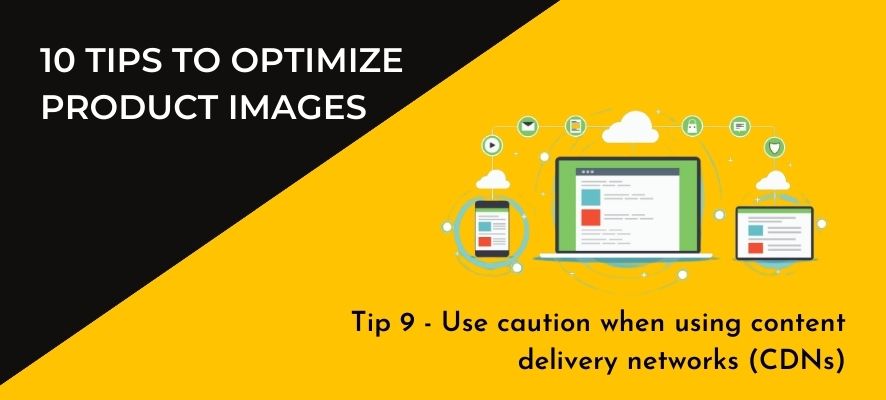
A content delivery network (CDN) is a group of geographically distributed servers that speed up the delivery of web content by bringing it closer to where users are. By uploading images to a CDN, you are probably changing the file from your domain to the CDN’s domain. Therefore, when someone connects to your image, they are linking to the CDN site.
Some notes you need to remember are:
- Just because something is “trendy” doesn’t mean you should follow it like a sheep. First, determine if it is the best move for your business.
- If your website is doing tonnes of business every month, then a CDN is most likely a good idea since it can help solve bandwidth issues.
- If your site only gets thousands of visitors a day right now, chances are your current hosting situation can handle the load.
Tip 10 - Test your images
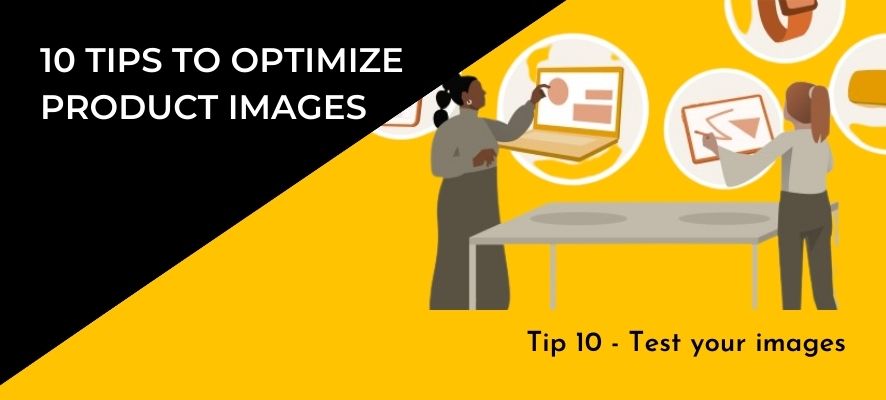
Product images are a factor that helps convert more customers, which is why you need to test your images to optimize your product page load speed.
Test the number of product images per page. You could find that reducing the number of images on a page will improve click-through rates and sales because load times are a problem for some non-hosted e-commerce sites. Additionally, having many images on each page will likely improve the user experience and increase sales. Testing it is the only way to understand this.
Test what angles your customers prefer. By offering viewpoints that your customers want to see, you might experience an increase in their loyalty. Asking your consumers what they liked best about the images of your goods is a great way to collect this information. In general, surveying and talking with your customers is a great habit to develop. Still, verify by testing.
Test how many product listings you should have on category pages. Test the number of products you list on category pages to see what works best for your customers.
In Conclusion
Visual product images will catch customers’ eyes; however, they also need to be optimized for browsers, especially Google, to decrease the speed of your online website. Hope these tips above can help you optimise your product images on your Shopify online store.



